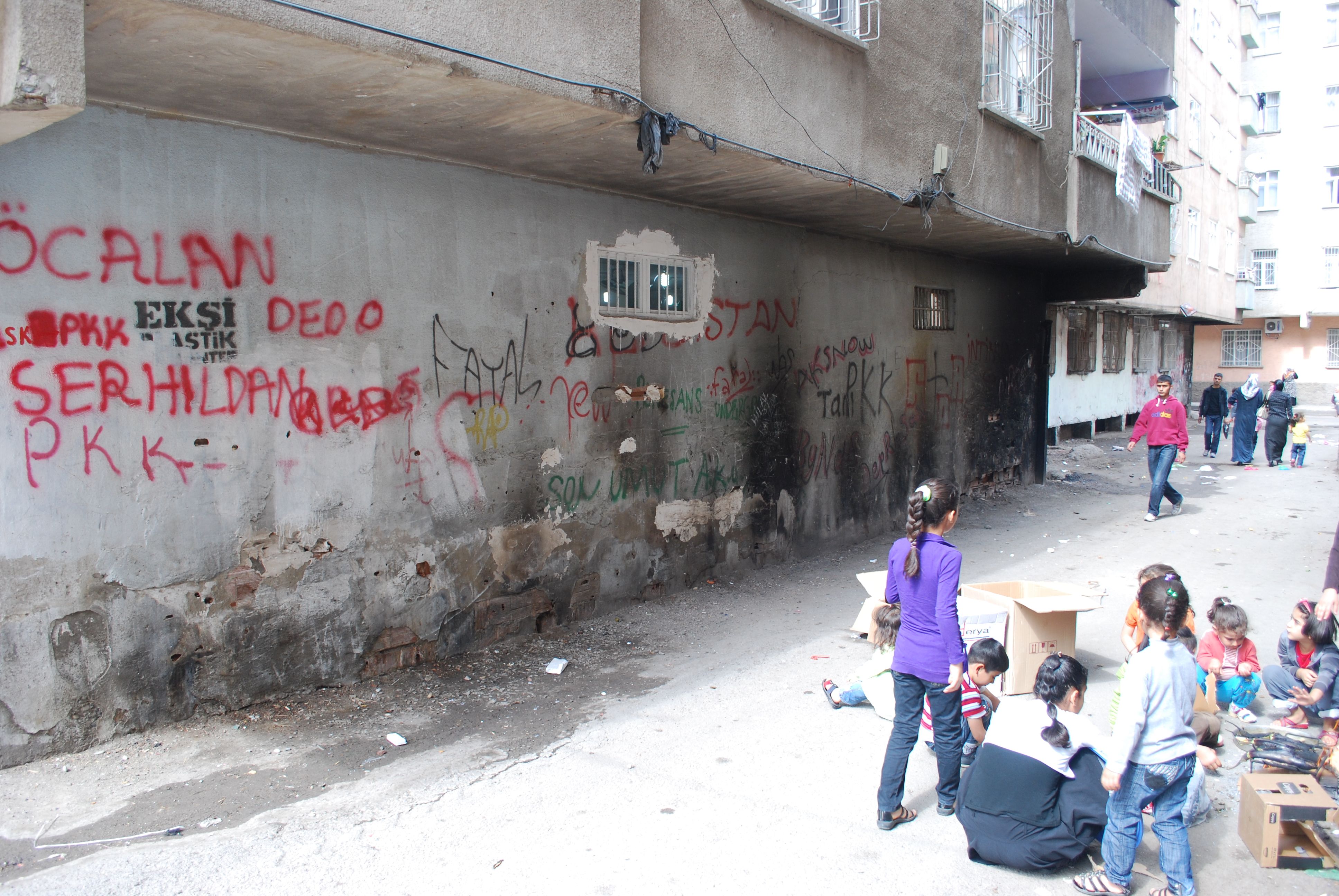Last Saturday was Republic Day in Turkey, but the celebration was muted. A 7.2 magnitude earthquake had ravaged the southeastern city of Van—already poor and a center for violent activity by the P.K.K., the outlawed Kurdistan Workers Party—and the death toll was nearing six hundred. Ritual fireworks, normally ignited from a barge in the middle of the Bosporus, were cancelled, as were parades. I watched from a friend’s balcony while Chinese lanterns floated calmly over the water—a pensive, sensitive acknowledgment that was somewhat out of character. Usually, there is no need for a holiday to bring out the bright red-and-white Turkish flags. Offices, classrooms, and stores display framed portraits of Ataturk in various poses—riding a horse, seated behind a desk, gazing at an off-frame light—above their blackboards or behind their counters, always the highest thing in the room. Turkey loves Turkey.
But this is not so much the case in the Kurdish southeast, where, since the early nineteen-eighties, a culture war spiraled into an all-out war, with Kurdish residents caught between the P.K.K. and the Turkish Army. Lately, the violence has been getting worse. Civilian casualties, including the horrific death of a baby cut from her mother after an attack, have dominated the national news. On October 18th, the P.K.K. killed twenty-four Turkish soldiers. What connection there was between the two sides was threatening to snap.
After the earthquake, some people seemed to come to their senses; relief was needed, quickly and indiscriminately. Aid was sent from all around the country to the stricken region. Headlines about collapsed buildings were soon replaced by hopeful ones about survivors being pulled from the wreckage. Those stories glowed with an ethnic solidarity that a day before the quake would have seemed impossible. The Turkish novelist Elif Shafak wrote in the Guardian, “Many are now wondering if this humanitarian crisis may be the beginning of a new era.”
It is an attractive silver lining. Reports on the aid, particularly following Turkey’s acceptance of foreign assistance, helped. Yilmaz Akinci, an Al-Jazeera reporter (and a Kurd himself) related pledges of renewed friendship from all strata of Turkish society gathered in Van in the aftermath. But it hasn’t been perfect. There are reports of too-few tents, and as the weather gets colder, the lack of shelter becomes more and more threatening. Akinci told me about rumors that a few boxes from Istanbul, disguised as aid packages, actually contained sticks and stones—the implication being that these are what Kurds and their “stone-throwers” really want. An A.T.V. anchorwoman said that God was punishing the Kurds.
I reached Kerim Yildiz, the chief executive of the Kurdish Human Rights Project, by phone. He, too, was hopeful that the earthquake will provide new room for negotiation between the Kurds and the Turks. “Sad to say, but the disaster has provided a new opportunity for people to come together and talk about these issues,” he told me. “The important issues—constitutional changes and reconciliation—are already on the table. If this opportunity can be seized it will be extremely important for Kurdish issues in Turkey.”
Monday, seven days after the earthquake, rescue workers have stopped looking for survivors. The number dead is six hundred and one. Reports from Van signal a discrepancy between official reports of a swift and effective relief effort and individual residents claiming that it has been insufficient. “Certainly the number of individuals who say they have not gotten aid and their neighbors have not gotten aid is high,” Yildiz said. It would be impossible, he said, with the information they have, to determine whether the relief effort was influenced by politics or discrimination; he agreed that the perception alone could be harmful to future negotiations.
“This should not become a political show for anyone,” Yildiz said. “If you can save one life, you go forward.”
Recently, I spent some time in Diyarbakir, one of the largest cities in the southeast, interviewing so-called “stone-throwing kids,” Kurdish youth who had been convicted as adults for participating in protests and then released suddenly when, in 2010, Turkey lightened its anti-terror laws. Most of the kids had been ruined by prison and, aside from a few success stories, had either been arrested again or joined P.K.K. militants in the mountains. They are representative of a generation of alienated Kurds who are, as one parent put it to me, “Unlikely to shake hands.”
The stories of these Kurdish youth reflect a more general anxiety in the region. As tension grows, so does the feeling of isolation in the southeast. As Turkish news reports terror, those in the southeast watch Kurdish Roj TV instead. They read Kurdish newspapers. They are forced to speak Turkish at school so they speak Kurdish at home, or do not go to school. And those Turkish flags, so ubiquitous in Istanbul, are replaced by red, green, white, and yellow Kurdish one; photos of Ataturk by photos of Abdullah Ocalan, the imprisoned founder of the P.K.K. The geographic isolation of the southeast—culminating in the conscription to the wilderness of the mountains—is immense. It is, compared to the west, another reality and another world. And then that world literally shook.
